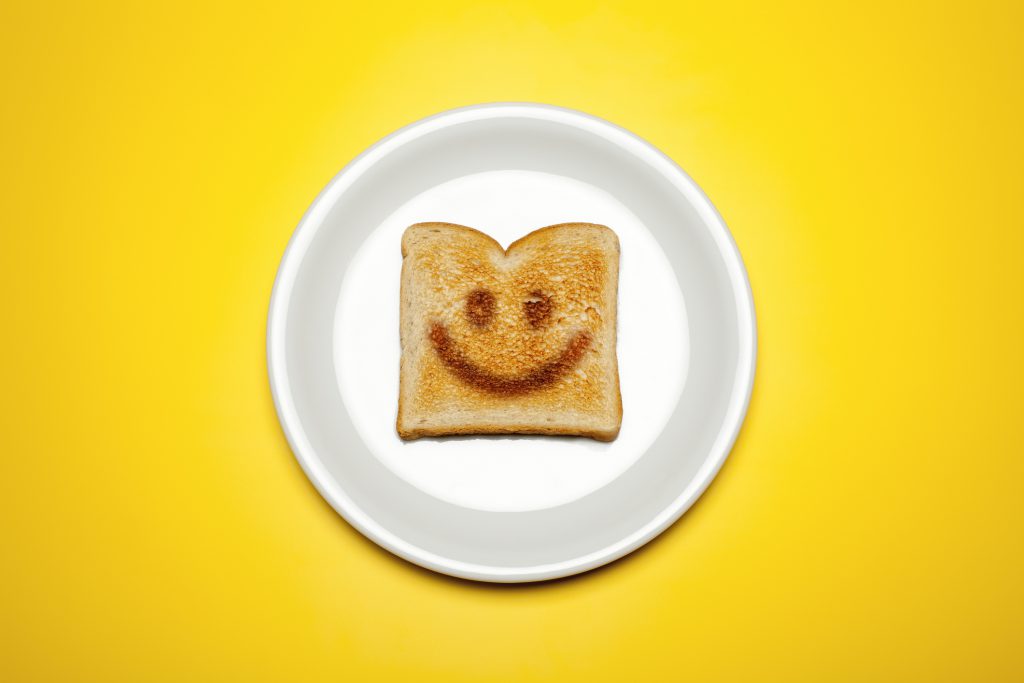A Closer Look at the Face in Your Toast

People seem to see faces in all sorts of strange places, whether it’s Albert Einstein in a cup of coffee, the face of Jesus on a piece of toast, or even the man in the moon. Why do people see faces, even where they don’t exist?
Although the phenomenon of seeing illusory faces — termed face pareidolia — is well documented, few studies have investigated the mechanisms underlying this experience. Those studies that have examined the brain regions associated with face pareidolia have only examined the perception of faces, meaning it is still unclear whether the brain regions identified in these studies are involved in face pareidolia specifically, or whether they are related to pareidolia — such as seeing words where none exist — in general. In a recent article in the journal Cortex, researchers Jiangang Liu, Jun Li, Lu Feng, Ling Li, Jie Tian, and APS Fellow Kang Lee sought to fill in this gap by identifying areas of the brain specifically associated with face pareidiolia. To do so, they compared parts of the brain activated during the perception of illusory faces with parts of the brain activated during the perception of illusory letters.
Twenty-five Chinese participants completed a training session during which they viewed faces (or letters) embedded in a noisy background. The participants were told half the images contained a face (or a letter) and that the difficulty of detecting the face (or letter) would increase across the training session. The participants started training with images that included easy-to-detect faces (or letters) and ended with images that were “pure noise.” After training, participants completed testing sessions during which they unknowingly viewed images that were pure noise and indicated when they saw a face (or letter). Participants completed the test tasks while being scanned in an fMRI machine.
Participants reported seeing faces in 34.23% of the pure-noise images on the face identification task and reported seeing letters in 38.27% of the pure noise images on the letter identification task
The researchers found that seeing an illusory face was associated with enhanced activation in the right fusiform face area (rFFA) and that greater activation in the rFFA was associated with stronger perceptions of face pareidolia. Enhanced activation of the left fusiform face area was seen when people reported seeing both illusory faces and illusory letters.
This finding suggests that the FFA — especially the rFFA — may play a special part in the perception of illusory faces. The authors suggest that the FFA may have an overlapping role in the processing of bottom-up information coming from the visual cortex and top-down conceptual information from the prefrontal cortex. Neural regions from the upper streams of face processing may bias the FFA to interpret bottom-up signals from the visual cortex as containing face information. People may therefore be biased to see faces, even when only the slightest hint of facial features exists.
Reference
Liu, J., Li, J., Feng, L., Li, L., Tian, J., and Lee, K. (2014). Seeing Jesus in toast: Neural and behavioral correlates of face pareidolia. Cortex, 53, 60–77. doi: 10.1016/j.cortex.2014.01.013





APS regularly opens certain online articles for discussion on our website. Effective February 2021, you must be a logged-in APS member to post comments. By posting a comment, you agree to our Community Guidelines and the display of your profile information, including your name and affiliation. Any opinions, findings, conclusions, or recommendations present in article comments are those of the writers and do not necessarily reflect the views of APS or the article’s author. For more information, please see our Community Guidelines.
Please login with your APS account to comment.